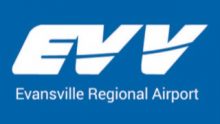A new study on behalf of Upgraded Points has identified the U.S. airports with the most runway incursions.
While flying remains one of the safest forms of transportation, the U.S. aviation system has come under renewed scrutiny in recent years. In January 2025, a mid-air collision over the Potomac River marked the first fatal crash involving a major U.S. commercial passenger flight in more than a decade. A series of communication and radar outages earlier this year disrupted operations at multiple air traffic control towers, highlighting mounting strain on the national airspace system. And ongoing staffing shortages among air traffic controllers have been the cause of delays at major commercial hubs.
These incidents have unfolded alongside a rise in runway-related safety incidents. In 2023, a string of high-profile near misses drew national attention and ultimately prompted the Federal Aviation Administration (FAA) to issue a Safety Call to Action. A central concern: runway incursions, which occur when aircraft, vehicles, or people enter active runway zones without clearance — posing serious risks during takeoffs and landings.
Amid these ongoing safety challenges, the research team at Upgraded Points, a company that compares travel and credit card rewards programs, set out to analyze whether runway near misses are becoming more common — and where they are happening most. Drawing on data from the FAA’s Aviation Safety Information Analysis and Sharing (ASIAS) system, the analysis reviews runway incursions at U.S. airports over the past 4 years. It focuses on the number, severity, and rate of these incidents to identify which airports — and what types of airports — present the greatest risk.
Are Runway Near Misses Happening More Often?

To assess changes in runway safety over time, it is important to understand how the FAA classifies runway incursions based on risk:
- Category A: A serious incident in which a collision was narrowly avoided.
- Category B: An incident with significant potential for collision that required immediate corrective action.
- Category C: An incident with ample time or distance to avoid a collision, but which still posed some risk.
- Category D: An incident with little or no immediate safety consequences, but still meets the definition of a runway incursion.
While the total number of runway incursions across all categories has remained relatively stable in recent years, the number of high-risk incursions (Category A and B) rose notably between 2017 and 2023. In 2017, just 8 high-risk incursions were reported; by 2023, that number had nearly tripled to 21 incidents, the highest annual total in over a decade.
This uptick in serious close calls was a key factor behind the FAA’s 2023 Safety Call to Action, and preliminary data suggests these efforts may be having a positive effect. In 2024, the number of high-risk incursions dropped sharply to just 7 incidents — the lowest total recorded since 2010.
What Causes Runway Close Calls?

Runway incursions can result from a variety of human and procedural breakdowns involving pilots, air traffic controllers, ground vehicles, or airport personnel. According to FAA data collected between 2021 and 2024, the most common cause of runway incursions across all categories is pilot deviation, which accounts for 63% of all incidents. These typically involve pilots failing to follow air traffic control instructions, misinterpreting taxiway signage, or mistakenly entering an active runway. Other contributing factors include operational incidents — errors made by air traffic controllers — which represent 18% of all cases, and vehicle or pedestrian deviations (VPDs), which occur when ground vehicles or personnel mistakenly enter a runway area, accounting for 17% of cases.
However, when focusing only on the most serious incursions — those classified as Category A or B — these proportions change. Operational incidents, while less frequent overall, are responsible for 57% of these high-risk events. This suggests that while pilot errors are more common in general, air traffic control lapses tend to lead to more dangerous situations when they do occur. In contrast, pilot deviations account for just 30% of serious incursions, and VPDs account for 10%.
Top 50 U.S. Airports for Runway Collision Hazards

FAA data show that runway incursions are not confined to 1 region or airport type. Instead, they are distributed across the country and occur at both large commercial hubs and smaller, noncommercial airports.
Among the top 5 airports with the highest number of runway incursions overall, 2 are major commercial hubs, while 3 are noncommercial airports primarily serving general aviation. Dekalb–Peachtree Airport (PDK), located in Atlanta, tops the list with 103 incursions between 2021 and 2024. Despite being a noncommercial facility, PDK is one of the busiest general aviation airports in the country, serving corporate jets, private pilots, and flight schools. In second place is Chicago Midway International Airport (MDW), a major commercial airport with 89 incursions, handling a high volume of domestic and international flights in a space-constrained urban setting.
Third on the list is North Las Vegas Airport (VGT) with 88 incursions. Like PDK, it is a general aviation airport that handles extensive training and private operations — an environment where runway incursions are more likely due to frequent takeoffs and landings by less-experienced pilots. Boston Logan International Airport (BOS) and Chicago O’Hare International Airport (ORD), both large commercial hubs, round out the top 5 with 83 incursions each. These facilities operate in dense airspace with complex taxiway layouts, which can heighten the risk of miscommunication or navigational errors on the ground.
At the same time, several high-volume commercial airports reported remarkably low runway incursion totals despite handling millions of flights. Seattle-Tacoma International Airport (SEA), Orlando International Airport (MCO), and LaGuardia Airport (LGA) each rank among the top 25 U.S. airports by total operations, yet all reported fewer than 20 incursions from 2021 to 2024 — and no high-risk incidents.
Top 50 U.S. Airports for High-Risk Runway Collision Hazards

While total runway incursions provide 1 measure of airport safety, a bigger concern is Category A and B incursions — those in which a collision was narrowly avoided or could have occurred without immediate action. Between 2021 and 2024, just 8 U.S. airports accounted for nearly a third of the 62 high-risk incursions that occurred nationally.
Of the airports that experienced 3 high-risk runway incursions during this period — the maximum of any airport — all are located in California. This includes Montgomery Gibbs Executive Airport (MYF), a noncommercial general aviation airport in San Diego; San Francisco International Airport (SFO), one of the nation’s busiest commercial hubs; Long Beach Airport (LGB), a small commercial airport in Southern California; and San Diego International Airport (SAN), a large commercial airport with a single-runway configuration.
Other airports reporting 2 high-risk incursions include both large commercial hubs and noncommercial facilities. These include Chicago Midway International (MDW), Boston Logan International (BOS), Austin-Bergstrom International (AUS), and Centennial Airport (APA) near Denver, a major general aviation airport. Each of these facilities operates in high-traffic or mixed-use environments that can make for challenging navigation.
The remaining airports that recorded at least 1 high-risk runway incursion between 2021 and 2024 represent a broad mix of commercial and noncommercial facilities spanning a wide range of sizes and profiles.
Here is a summary of the data for Evansville Regional (EVV):
- Total runway incursions: EVV
- High-risk runway incursions (A & B): 5
- Lower-risk runway incursions (C, D & E): 0
- Total runway incursions per 1M flights: 5
- High-risk runway incursions per 1M flights: 35.0
- Total operations: 0.0
- Airport type: 142,892
Methodology
This analysis uses data from the Federal Aviation Administration’s Aviation Safety Information Analysis and Sharing (ASIAS) system, which compiles detailed records of aviation safety events, including runway incursions, across the United States. A runway incursion occurs when an aircraft, vehicle, or person enters the protected area of a runway without authorization, creating a potential collision risk. These incidents are categorized by severity:
- Category A: A serious incident in which a collision was narrowly avoided.
- Category B: An incident with significant potential for collision that required immediate corrective action.
- Category C: An incident with ample time or distance to avoid a collision, but which still posed some risk.
- Category D: An incident with little or no immediate safety consequences, but still meets the definition of a runway incursion.
- Category E: Rare incidents with insufficient or conflicting information that prevents it from being properly categorized.
To determine which U.S. airports experienced the most runway incursions, Upgraded Points analyzed ASIAS data covering a 4-year period from 2021 through 2024, the most recent years with complete records available. Airports were ranked based on their total number of runway incursions during this timeframe. In the event of ties, higher priority was first given to airports with a greater number of Category A or B incursions, reflecting more serious safety risks, and then to airports with a higher rate of incursions per 1 million flight operations.
To improve the comparability of the results, airports were grouped into 5 FAA operational cohorts: Large Commercial, Medium Commercial, Small Commercial, Non-Hub Commercial, and Non-Commercial (airports primarily used for general aviation or military).
NOTES TO EDIT





